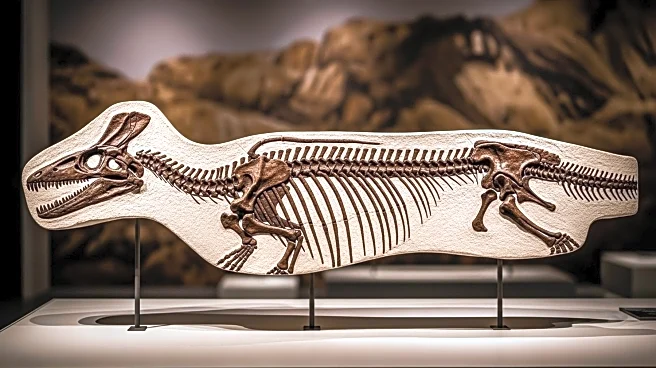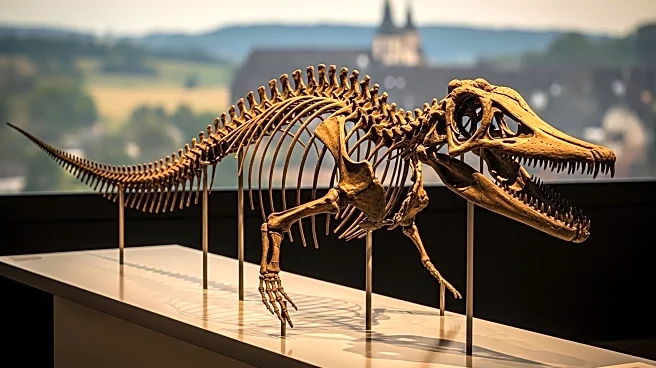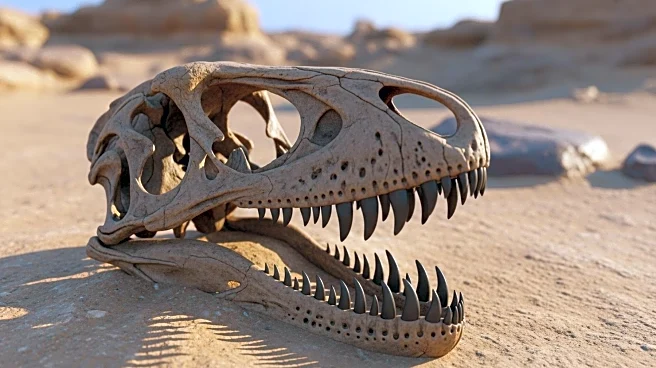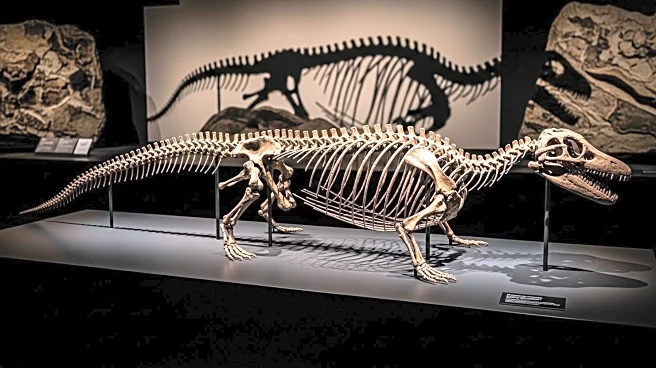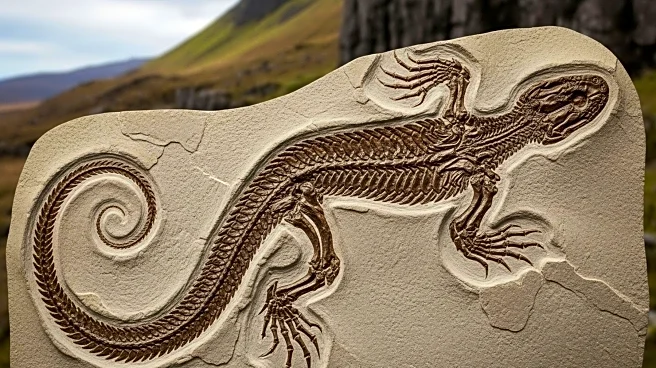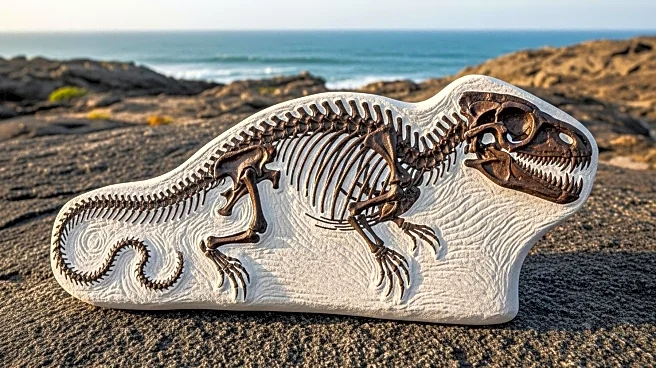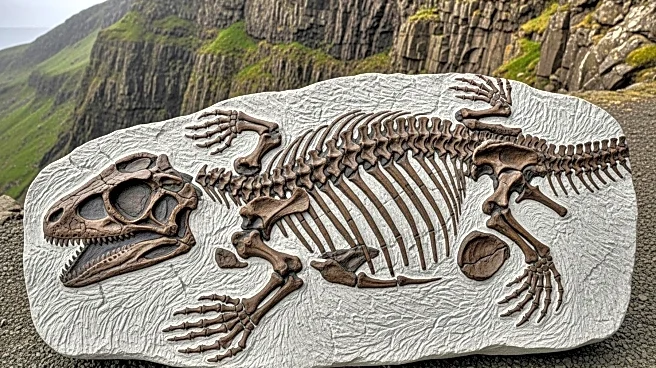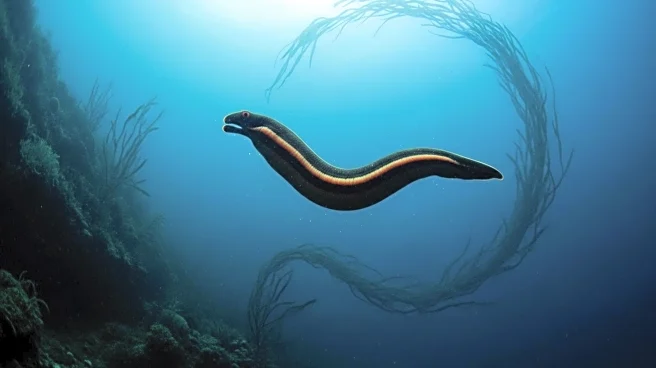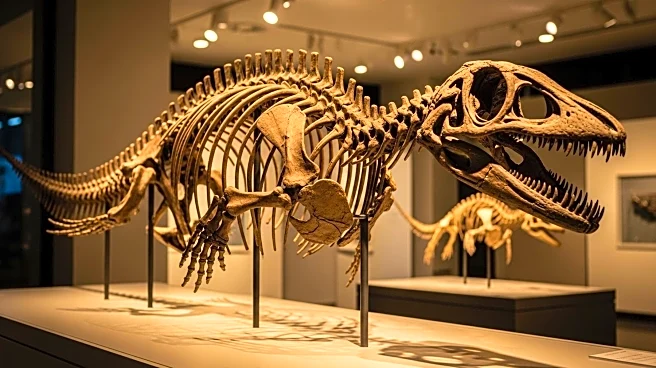What is the story about?
What's Happening?
A newly published study in Nature has introduced Breugnathair elgolensis, a Jurassic-era reptile that exhibits a unique combination of features from both snakes and lizards. Initially discovered in 2015, the fossil was mistakenly thought to belong to separate animals due to its unusual characteristics. The creature, now classified within the extinct group Parviraptoridae, has a gecko-like body but jaws and teeth resembling those of modern pythons. Researchers used advanced imaging techniques to reconstruct the fossil and analyze its genetic lineage, revealing a nearly complete skeleton that challenges existing theories about snake evolution.
Why It's Important?
The discovery of Breugnathair elgolensis provides new insights into the evolutionary history of snakes and lizards, suggesting that the origins of these reptiles may be more complex than previously understood. This finding could reshape scientific understanding of reptilian evolution, potentially impacting related fields such as genetics and paleontology. The study highlights the unpredictable nature of evolutionary paths and underscores the importance of revisiting and re-evaluating fossil evidence with modern technology.
What's Next?
Further research is needed to determine the exact evolutionary role of Breugnathair elgolensis and its implications for the ancestry of snakes. Scientists may continue to explore other fossils within the Parviraptoridae group to gain a deeper understanding of reptilian evolution. This discovery may also prompt additional studies using similar imaging techniques to reassess other enigmatic fossils.
Beyond the Headlines
The study raises questions about the accuracy of historical fossil classifications and the potential for modern technology to uncover new evolutionary links. It also highlights the importance of interdisciplinary collaboration in paleontology, combining genetic analysis with advanced imaging to reconstruct ancient life forms.
AI Generated Content
Do you find this article useful?
